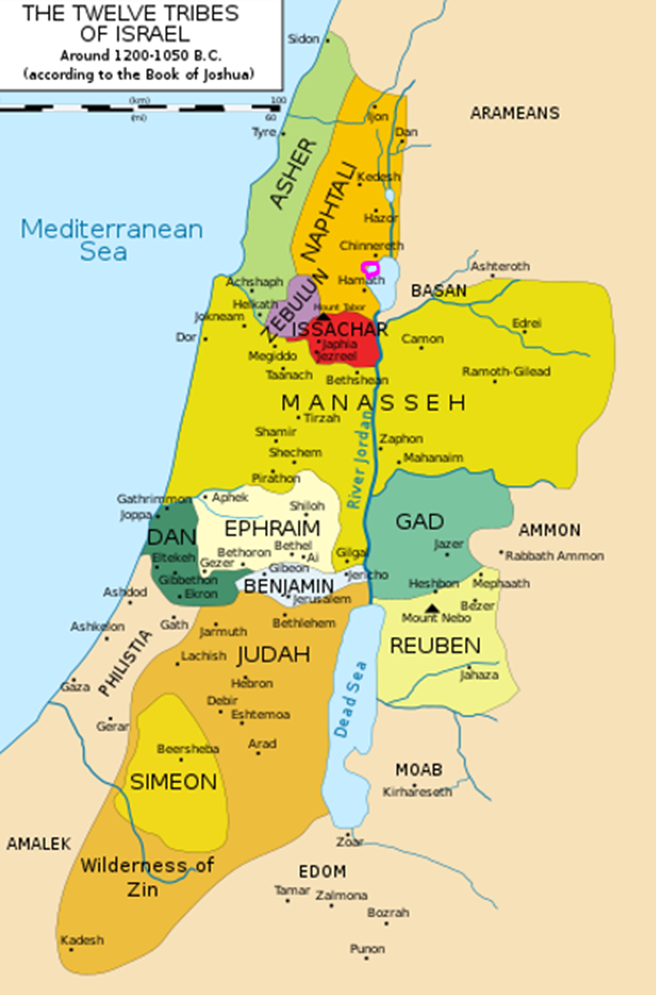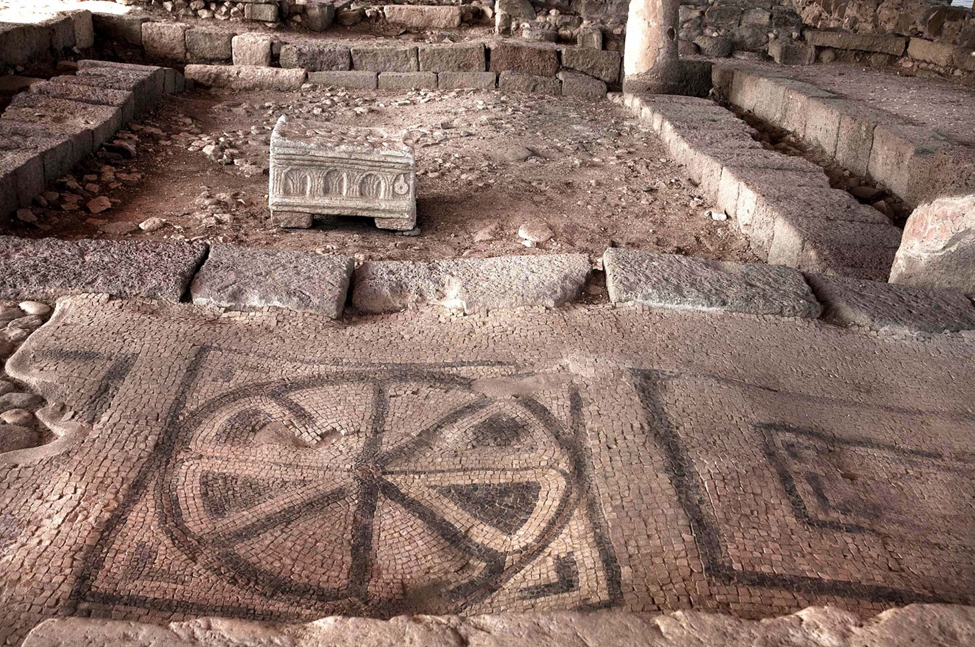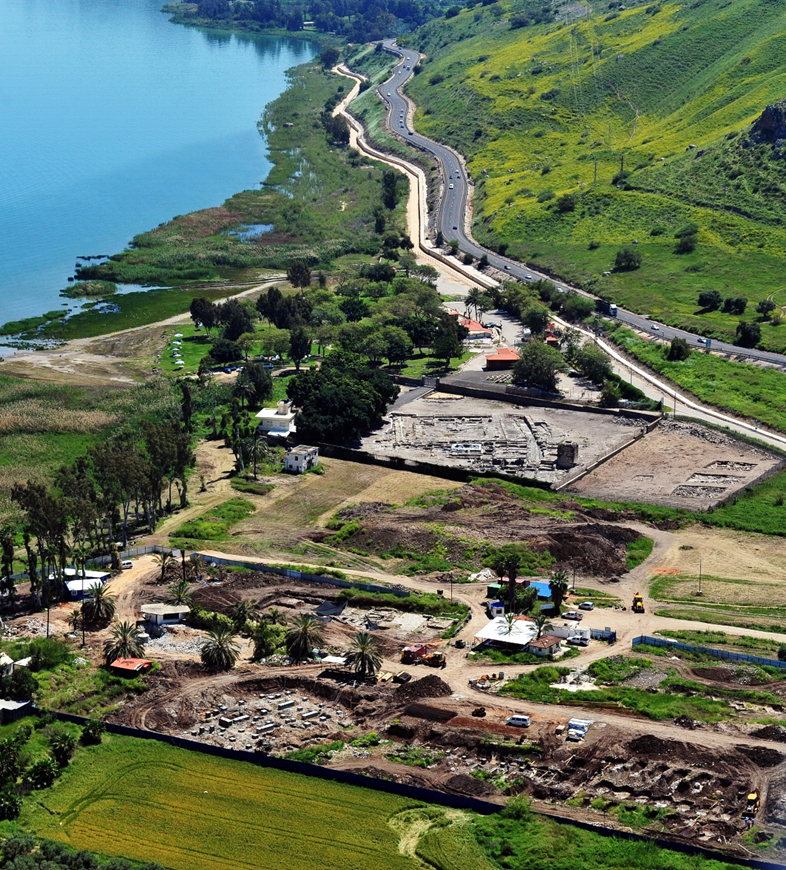

Today, we are visiting one of Israel’s best kept secrets! Ancient Migdal (Magdala) is as beautiful as it is historic. In 2021 this sleepy town (pop. 2000) just north of Tiberias, was in the news for an exciting (and very rare) find, revolutionizing the way researchers understood an entire time period (more on that shortly). During the Second Temple period, Migdal was an important city and the unique findings we will see here more than substantiate this! Today’s Migdal, is just across the highway from ancient Migdal.

Photo Credit: pokku / Shutterstock
Migdal (along with the entire western coast of the Sea of Galilee) was given to the tribe of Naphtali.

Photo Credit: “File:12 Tribes of Israel Map.svg” by 12 tribus de Israel.svg: Translated by Kordas 12 staemme israels heb.svg: by user:12 יוסי staemme israels.png: by user:Janz derivative work Richardprins (talk) is licensed under CC BY-SA 3.0
Magdala (often referred to in ancient sources by its Greek name “Taricheae”) became an important city in the Hellenistic period. Besides its strategic location on a crossroads (today’s highway 90 and 807) the surrounding area was super fertile (more on that in an upcoming article) and filled with springs. In addition, because this part of the Sea of Galilee has a huge abundance of fish, a major fishing industry sprang up here (the Greek name of the town can be translated as “The industry of pickling fish”).

Photo Credit: SuperJew – CC BY-SA 3.0
The city reached its Zenith in the early Roman period (circa 1st century BCE) and was very financially successful (one early historian called it a place “contributing a wagon-load of taxes” to the economy). The wealth of its inhabitants is evident in the mansions that were found here, and the well-designed marketplace where each store (due to the abundance of water) had their own technologically advanced plumbing system, connecting the shops with access to fresh water. Amazingly this system is in such good shape, that it’s still functional today! Also found in the market were plastered pools of different sizes, which held fish that the customers could select for their dinner.

Photo Credit: Magdala Archeological Park
The city was entirely Jewish, with a well-established religious infrastructure. Several well preserved Mikvehs (religious baths) were found, that even today are in pristine condition.

Photo Credit: Magdala Archeological Park
In 2009, the oldest synagogue in the Galilee (only 1 of 7 found from the Second Temple period in the entire country) was discovered (circa 50 BCE-67 CE). The Synagogue was massive (120 square meters or 394 feet) and clearly well-funded, replete with mosaics, frescos, and elaborate ornaments.

Photo Credit: גל עמוס – CC BY-SA 4.0
The main hall had built-in stone benches that went around the floor on all sides. There was also a side room.

Photo Credit: Magdala Archeological Park
The most important, one of a kind find in the synagogue was the now famous Magdala stone. This was a table used for reading the Torah during synagogue services and is the earliest one ever found. The stone table had beautiful carvings of images from the holy Temple in Jerusalem, including the Menorah (the earliest known depiction of it). At the time the Temple stood, Jews had a Torah obligation to ascend to Jerusalem three times a year. Thus, it can be safely assumed that whoever carved these images had seen the Temple himself!

Photo Credit: Shutterstock
In 2021 a revolutionary find was discovered, which archeologist had not expected. During the widening of Highway 90 (Israel’s longest route) another Second Temple synagogue was discovered (the first time two synagogues were found during this period in the same location). Despite a plethora of ancient Jewish texts mentioning that synagogues were part of mainstream Jewish life even when the Temple stood, many (secular) academics still claimed that synagogues were not overly important in daily life, as few synagogues from this period were found. Now that two synagogues were found located a mere 200 meters from each other, and since only about 10% of the ancient city has been excavated thus far (it’s plausible there were more) several academics are now hypothesizing that synagogues were indeed an important part of the social fabric at the time (for more on this, click here)!

Photo Credit: AVRAM GRAICER -CC BY-SA 3.0
In 18 CE, Herod Antipas built Tiberias (slightly to the south) in order to honor then Roman Emperor Tiberias. Migdal then lost much of its importance, although it remained prominent in the fish industry. In 66 CE, Jews from around the country began to revolt and Migdal was fortified with a wall (many of the rebels from other towns also gathered here). After a long siege, the Romans broke through the walls in 67 CE and thousands of rebels fled on their fishing boats into the Sea of Galilee. The Romans gave chase, slaughtering thousands of rebels at Sea and then destroying the city. One of the fishing boats from that era (which may have been also used in the rebellion) was discovered in 1986.

Photo Credit: Travellers & Tinkers – CC BY-SA 4.0
Afterwards, the city became small and insignificant (although the Byzantines did build a monastery here). In 1910, land was bought nearby by Jewish pioneers from Russia who started the agricultural settlement of Migdal, a beautiful town that continues to flourish today.
Please visit the author’s site: https://guidedtoursofisrael.com






![10/7, Religiously Speaking – Phantom Nation [audio]](https://www.jewishpress.com/wp-content/uploads/2025/02/silhouette-3777403_640-218x150.jpg)
![How To Turn Pain Into Power – Soul Talk [audio]](https://www.jewishpress.com/wp-content/uploads/2025/02/man-2037255_640-218x150.jpg)












